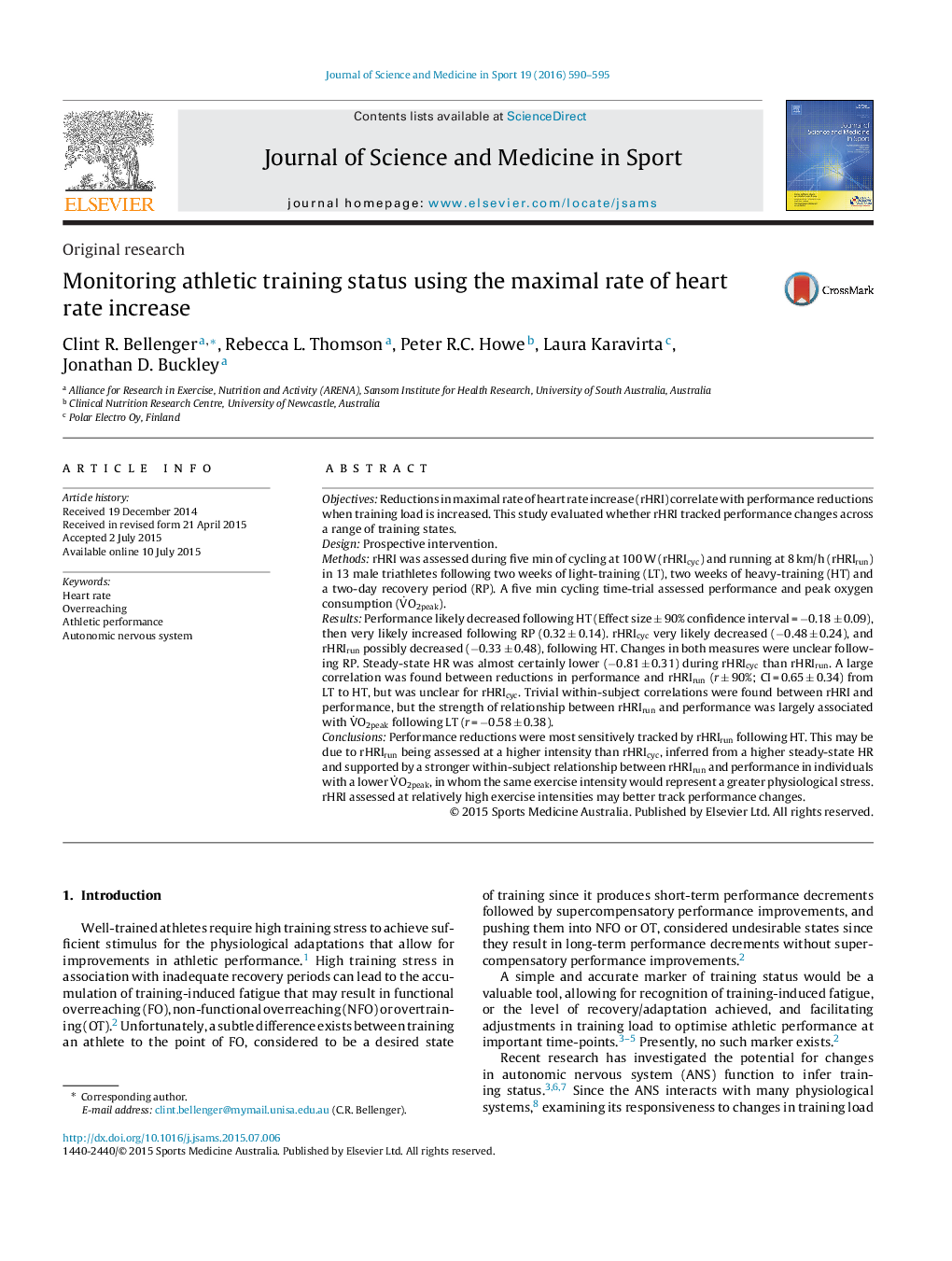| Article ID | Journal | Published Year | Pages | File Type |
|---|---|---|---|---|
| 2701388 | Journal of Science and Medicine in Sport | 2016 | 6 Pages |
ObjectivesReductions in maximal rate of heart rate increase (rHRI) correlate with performance reductions when training load is increased. This study evaluated whether rHRI tracked performance changes across a range of training states.DesignProspective intervention.MethodsrHRI was assessed during five min of cycling at 100 W (rHRIcyc) and running at 8 km/h (rHRIrun) in 13 male triathletes following two weeks of light-training (LT), two weeks of heavy-training (HT) and a two-day recovery period (RP). A five min cycling time-trial assessed performance and peak oxygen consumption (V˙O2peak).ResultsPerformance likely decreased following HT (Effect size ± 90% confidence interval = −0.18 ± 0.09), then very likely increased following RP (0.32 ± 0.14). rHRIcyc very likely decreased (−0.48 ± 0.24), and rHRIrun possibly decreased (−0.33 ± 0.48), following HT. Changes in both measures were unclear following RP. Steady-state HR was almost certainly lower (−0.81 ± 0.31) during rHRIcyc than rHRIrun. A large correlation was found between reductions in performance and rHRIrun (r ± 90%; CI = 0.65 ± 0.34) from LT to HT, but was unclear for rHRIcyc. Trivial within-subject correlations were found between rHRI and performance, but the strength of relationship between rHRIrun and performance was largely associated with V˙O2peak following LT (r = −0.58 ± 0.38).ConclusionsPerformance reductions were most sensitively tracked by rHRIrun following HT. This may be due to rHRIrun being assessed at a higher intensity than rHRIcyc, inferred from a higher steady-state HR and supported by a stronger within-subject relationship between rHRIrun and performance in individuals with a lower V˙O2peak, in whom the same exercise intensity would represent a greater physiological stress. rHRI assessed at relatively high exercise intensities may better track performance changes.
